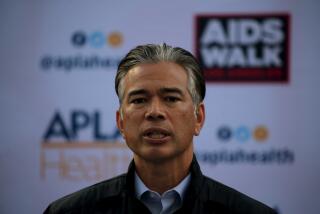Company Performance : Top Earners: Really Worth All That Money?
Are the top-paid executives in California really worth it?
No one knows for sure. But judging by one measure--how well their companiesâ stocks have performed relative to their competitorsâ--one can argue that at least most of the top 10 are worth it.
Eight of the top 10 can boast that their firmsâ stocks outperformed the average of their respective industries, according to consultants at Mercer-Meidinger-Hansen.
(The analysis was based on stock performance during the five years preceding the end of the latest fiscal year for which compensation figures were available. A shorter period was used in cases of companies that went public less than five years ago or in cases where the executive joined the firm less than five years ago.)
Performance Dramatic
In some cases, the stock performance was dramatic. Since No. 1-ranked Willard S. Drexler joined the Gap in December, 1983, that firmâs stock rose 581% through the end of 1986. That compared to only a 54.7% rise for retail store stocks as a group, as tracked by Standard & Poorâs.
No. 4 W. J. Sanders III and No. 6 Anthony B. Holbrook can boast that the stock of their firm, Advanced Micro Devices, rose 237%, compared to only 7.4% for semiconductor stocks as a group.
No. 3 David M. Hallis can boast that the stock of his firm, Maxicare Health Plans, rose 64.5% since October, 1983, soon after it went public, while hospital management stocks as a whole declined 27%.
Such boasts, however, cannot be made by No. 5 Thomas Spiegel and No. 9 Richard B. Madden. Although Spiegelâs Columbia Savings had the highest returns on assets and equity among Californiaâs 10 largest publicly traded savings and loans, its stock had fallen 1.75% between April, 1984, about when it went public, and year-end 1986. That compared to an 85.8% rise for S&L; stocks overall.
Imperfect Gauge
Stock of Maddenâs Potlatch rose 93.3%, which is not bad except when compared to the 134.7% gain for paper company stocks as a group.
To be sure, use of stock performance is not a perfect gauge of whether executives deserve their lofty keep. A companyâs performance may not be fully reflected in its stock price, and certain stocks may simply be out of favor among investors, some analysts argue. Or, an executive may not deserve much credit for his companyâs performance.
Other measures, such as return on equity, return on invested capital or cash flow, can be equally valid as yardsticks of executive worth, analysts say. âEveryone is searching for the magic measure,â Mercer-Meidinger-Hansen consultant Fred E. Whittlesey said.
More to Read
Inside the business of entertainment
The Wide Shot brings you news, analysis and insights on everything from streaming wars to production â and what it all means for the future.
You may occasionally receive promotional content from the Los Angeles Times.








